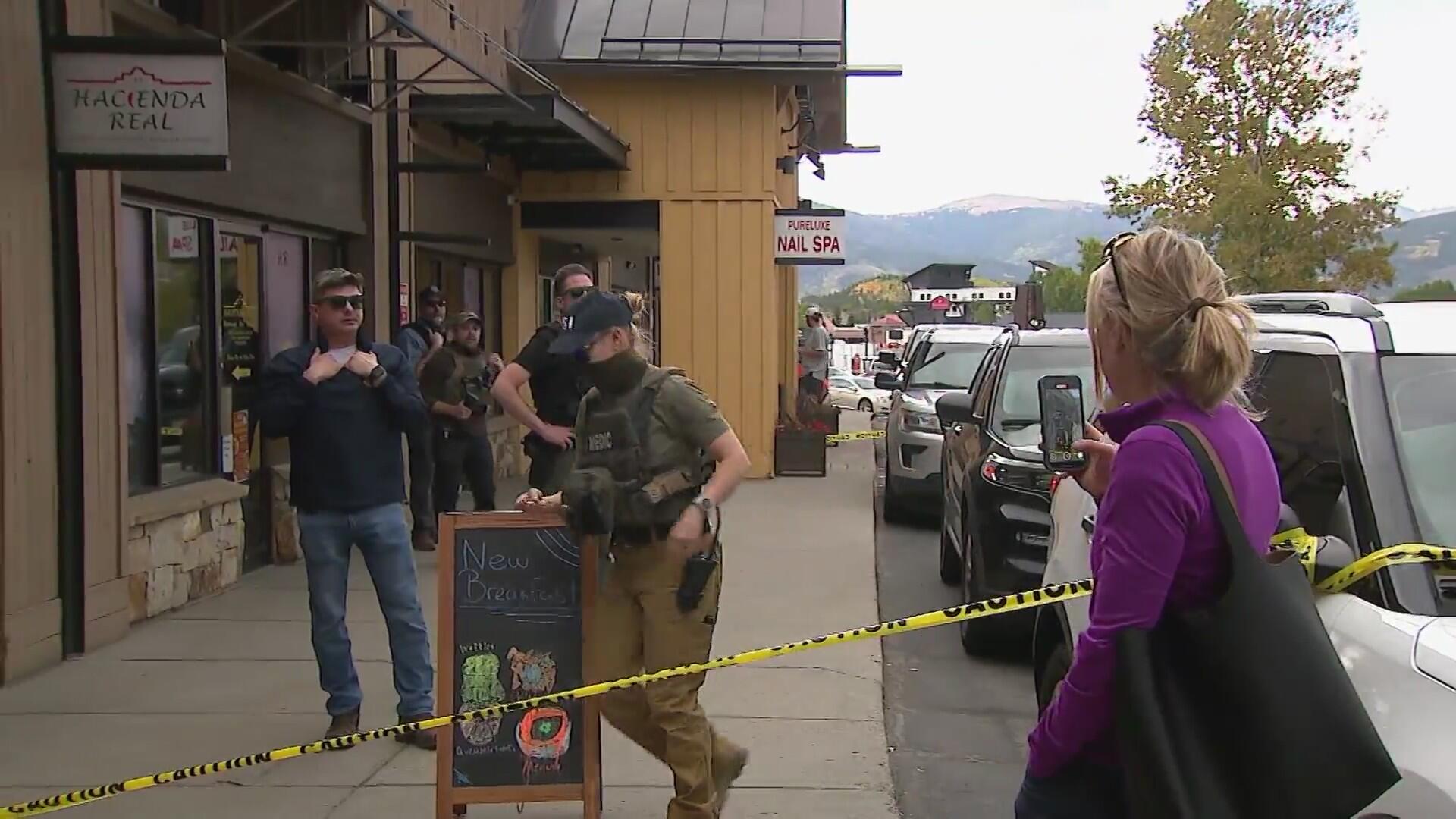Economic Impact Analysis of EAA AirVenture 2024: A Report on Regional Growth and Sustainable Development
A formal economic impact analysis of the 2024 EAA AirVenture event was conducted by the University of Wisconsin—Oshkosh (UWO). The study, led by Professor David Fuller, quantifies the event’s significant economic contributions to the Fox Valley region and highlights its alignment with several key United Nations Sustainable Development Goals (SDGs).
Key Economic Findings
The analysis, based on surveys of event patrons and vendors, reveals substantial economic growth since the last assessment in 2017. The findings underscore the event’s role as a primary economic driver for the local and regional economy.
- Total Regional Economic Impact: $257 million for the Fox Valley economy, an increase from $170 million in 2017.
- Total Regional Job Creation: 2,100 jobs supported throughout the Fox Valley region.
- Oshkosh-Specific Economic Impact: $117 million generated directly for the City of Oshkosh.
- Oshkosh-Specific Job Creation: 815 jobs supported within the City of Oshkosh.
Alignment with Sustainable Development Goals (SDGs)
The EAA AirVenture event and the collaborative study to measure its impact serve as a practical model for achieving local and regional sustainable development objectives.
SDG 8: Decent Work and Economic Growth
The report provides direct evidence of the event’s contribution to promoting sustained, inclusive, and sustainable economic growth, full and productive employment, and decent work for all.
- Job Creation: The generation of 2,100 regional jobs, including 815 in Oshkosh, directly addresses the goal of achieving full and productive employment.
- Economic Stimulation: The $257 million infusion into the regional economy through tourism-related spending (lodging, food, retail) supports local enterprises and promotes sustainable economic growth.
- Sustainable Tourism: The event exemplifies a large-scale sustainable tourism model that creates jobs and promotes local culture and products, aligning with Target 8.9.
SDG 11: Sustainable Cities and Communities
The economic vitality fostered by AirVenture strengthens the financial resilience of Oshkosh and the surrounding Fox Valley, making the community more inclusive, safe, and sustainable.
- Strengthening Local Economies: The significant revenue stream fortifies the local economic base, supporting public services and infrastructure.
- Supporting Community Links: The event reinforces positive economic and social links between the urban center of Oshkosh and the wider peri-urban and rural areas of the Fox Valley region, as per Target 11.a.
SDG 4: Quality Education
The project methodology incorporated a significant educational component, providing students with invaluable skills and experience.
- Experiential Learning: UWO students played a key role in the survey work, gaining practical, hands-on research experience that enhances their formal education.
- Developing Relevant Skills: This faculty-led research initiative provides students with relevant skills for employment and entrepreneurship, directly contributing to Target 4.4.
SDG 17: Partnerships for the Goals
The successful completion of this impact analysis is a testament to the power of multi-stakeholder partnerships in achieving sustainable development.
- Institutional Collaboration: The partnership between the University of Wisconsin—Oshkosh (academia) and the Experimental Aircraft Association (civil society) exemplifies the effective collaboration required to achieve the SDGs.
- Community Engagement: The study reflects the university’s commitment to community engagement and leveraging its intellectual capital for public benefit, a core principle of building effective partnerships.
SDGs Addressed in the Article
SDG 8: Decent Work and Economic Growth
- The article’s primary focus is on the economic impact of the EAA AirVenture event. It directly addresses economic growth by quantifying the event’s contribution to the local economy. The text states, “a total economic impact of $257 million for the Fox Valley regional economy in 2024.” It also highlights job creation, a key component of decent work, mentioning the event “brings in… 2,100 jobs to the Fox Valley region economy—$117 million and 815 jobs to Oshkosh alone.”
SDG 4: Quality Education
- The article connects the economic study to quality education by highlighting the role of the University of Wisconsin—Oshkosh. It mentions giving “students a co-pilot role in the study” and “student involvement in survey work.” This demonstrates a commitment to providing students with practical, real-world experience that complements their academic learning, as stated by Professor Fuller: “Faculty-led research and student involvement in survey work reflects the university’s commitment to community engagement and real-world impact.”
SDG 11: Sustainable Cities and Communities
- The event’s impact on the local community and its economy is a central theme. By generating significant revenue and jobs for Oshkosh and the wider Fox Valley region, the event contributes to the economic sustainability of the community. The article notes, “The study showcases AirVenture’s immense value to the local economy and the City of Oshkosh.” This supports the goal of making cities and human settlements inclusive, safe, resilient, and sustainable.
SDG 17: Partnerships for the Goals
- The entire study is a result of a partnership between different sectors. The article explains that the “Experimental Aircraft Association” asked “Professor David Fuller” of the “University of Wisconsin—Oshkosh” to conduct the analysis. This collaboration between a civil society organization (EAA) and an academic institution (UWO) to achieve a common goal is a clear example of the partnerships envisioned in SDG 17. Professor Fuller emphasizes these “strong community links.”
Specific Targets Identified
Under SDG 8: Decent Work and Economic Growth
- Target 8.3: Promote development-oriented policies that support productive activities, decent job creation, entrepreneurship, creativity and innovation. The article showcases how a large-scale event (a productive activity) directly leads to significant job creation (“2,100 jobs”) and supports local entrepreneurship through spending on “lodging, food and drinks, gas and retail items.”
- Target 8.9: By 2030, devise and implement policies to promote sustainable tourism that creates jobs and promotes local culture and products. The EAA AirVenture is a major tourism event attracting “650,000 aviation enthusiasts.” The economic impact study itself is a tool that helps in understanding and promoting this form of tourism, which creates local jobs and boosts the regional economy.
Under SDG 4: Quality Education
- Target 4.4: By 2030, substantially increase the number of youth and adults who have relevant skills, including technical and vocational skills, for employment, decent jobs and entrepreneurship. The article implies progress towards this target by describing how students gained practical experience through “a co-pilot role in the study” and “involvement in survey work,” which are relevant skills for research, economics, and community engagement.
Under SDG 11: Sustainable Cities and Communities
- Target 11.a: Support positive economic, social and environmental links between urban, peri-urban and rural areas by strengthening national and regional development planning. The study explicitly analyzes the economic links and benefits for the “Fox Valley regional economy,” demonstrating a positive economic relationship spurred by an event in a specific city (Oshkosh).
Under SDG 17: Partnerships for the Goals
- Target 17.17: Encourage and promote effective public, public-private and civil society partnerships. The collaboration detailed in the article between the University of Wisconsin—Oshkosh (a public academic institution) and the Experimental Aircraft Association (a civil society organization) to produce the economic impact analysis is a direct embodiment of this target.
Indicators Mentioned or Implied
For SDG 8 Targets
- Total economic impact in monetary value: The article explicitly states “$257 million for the Fox Valley regional economy” and “$117 million… to Oshkosh alone.” This serves as a direct indicator of economic growth.
- Number of jobs created: The report quantifies job creation with the figures “2,100 jobs to the Fox Valley region economy” and “815 jobs to Oshkosh alone.”
- Visitor spending: The article implies this indicator by mentioning that the study surveyed patrons “to determine how much they spent in the area economy” on items like “lodging, food and drinks, gas and retail items.”
For SDG 4 Targets
- Student participation in research projects: The article implies this indicator through phrases like “giving students a co-pilot role in the study” and “student involvement in survey work,” which measure the university’s success in providing real-world learning opportunities.
For SDG 11 Targets
- Value of economic contribution to a region from a specific activity: The “$257 million” impact figure serves as an indicator of the positive economic links between the event’s host city and the surrounding region.
For SDG 17 Targets
- Existence of cross-sector partnerships: The partnership between the University of Wisconsin—Oshkosh and the Experimental Aircraft Association is itself an indicator of successful collaboration to achieve a shared objective.
Summary of Findings
| SDGs | Targets | Indicators |
|---|---|---|
| SDG 8: Decent Work and Economic Growth | 8.3: Promote policies for productive activities and job creation. 8.9: Promote sustainable tourism that creates jobs. |
– Total economic impact: $257 million for the region. – Number of jobs created: 2,100 in the region, 815 in Oshkosh. – Visitor spending on lodging, food, gas, and retail. |
| SDG 4: Quality Education | 4.4: Increase the number of youth and adults with relevant skills for employment. | – Student involvement in real-world research and survey work. |
| SDG 11: Sustainable Cities and Communities | 11.a: Support positive economic links between urban and regional areas. | – Economic value generated by the event for the City of Oshkosh and the broader Fox Valley region. |
| SDG 17: Partnerships for the Goals | 17.17: Encourage and promote effective public, public-private and civil society partnerships. | – The existence of the partnership between the University of Wisconsin—Oshkosh and the Experimental Aircraft Association. |
Source: uwosh.edu







